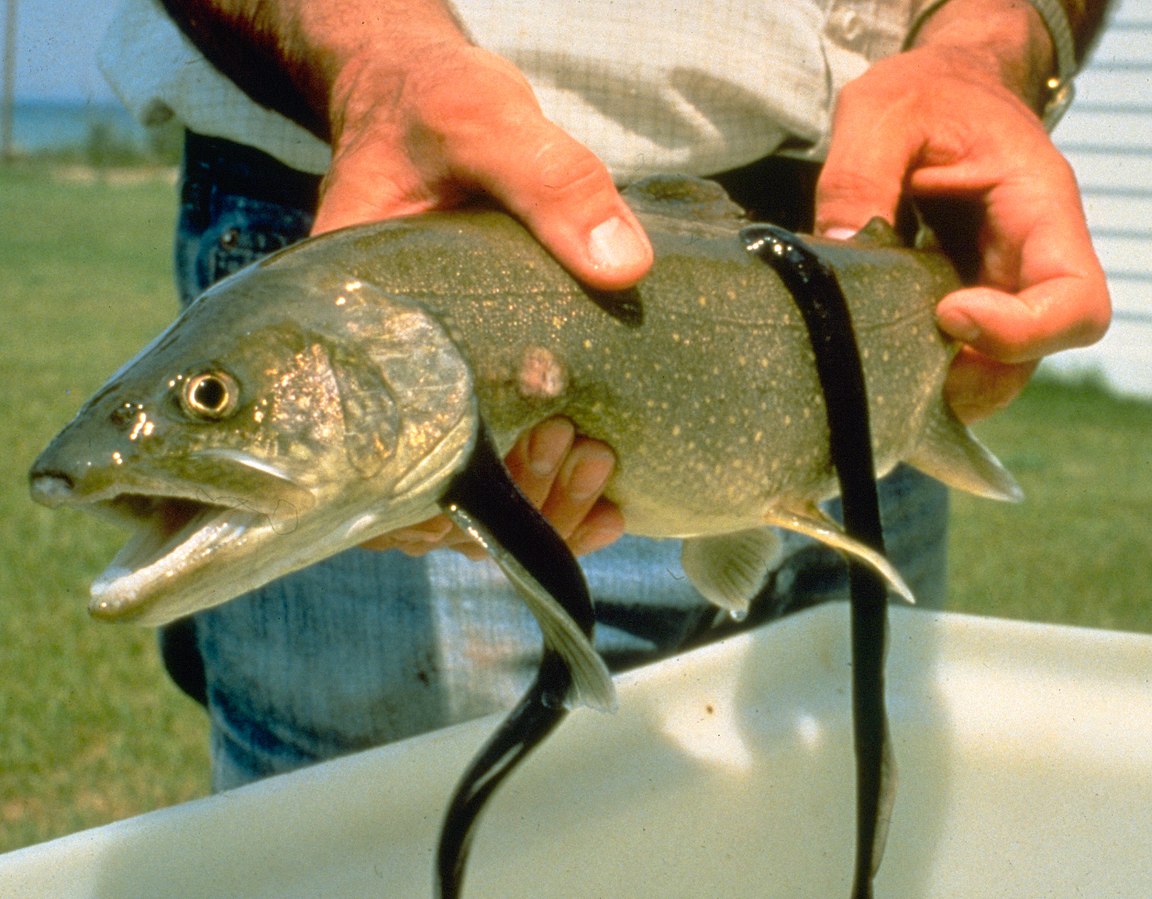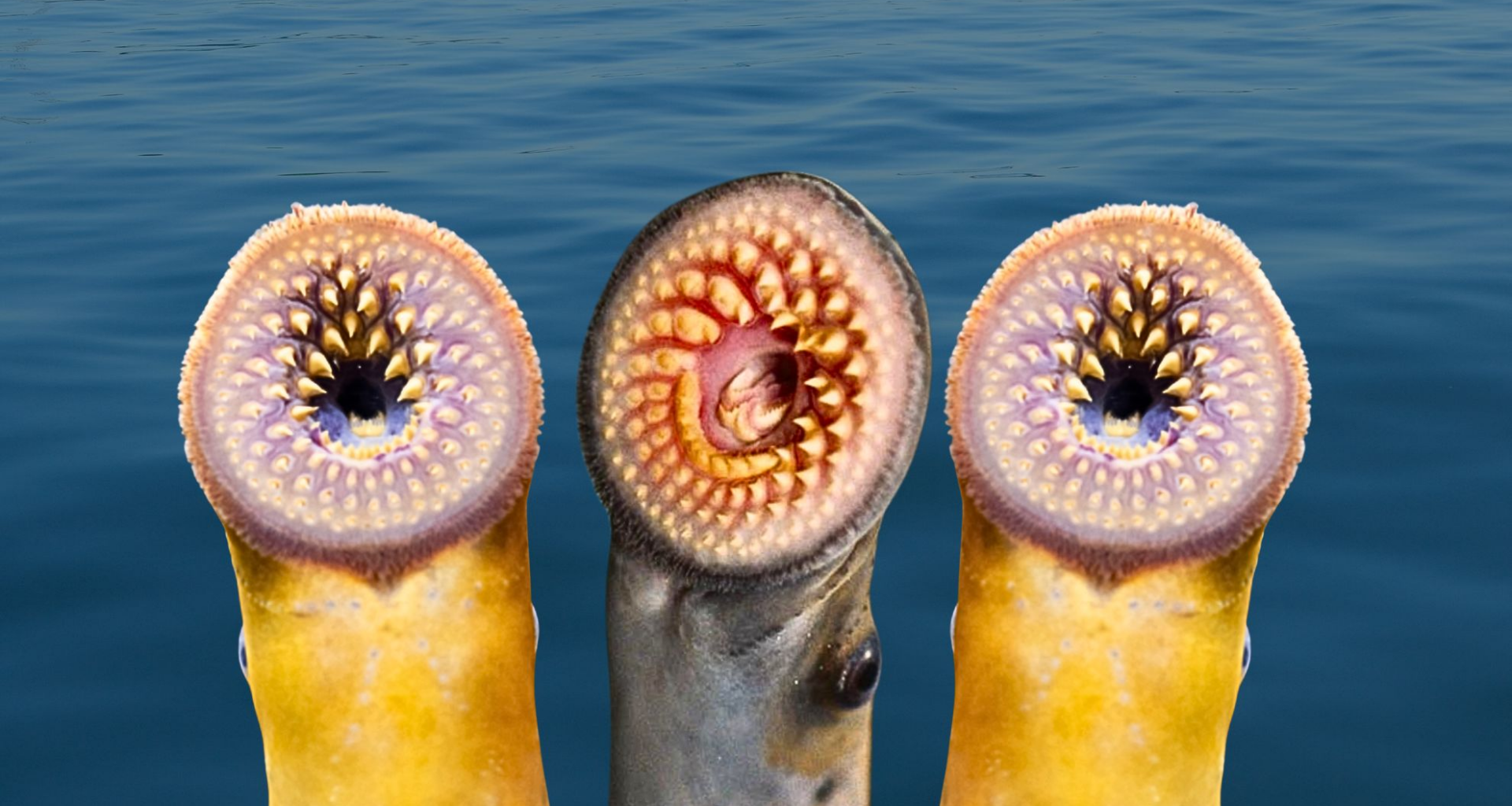They have about 100 teeth, which they use to suction to the side of a fish, and a sharp tongue that drills through its scales.
They secret an enzyme that prevents blood from clotting. Once attached, the sea lamprey will spend the next several months feeding off the blood and fluids of the host animal.

Lake trout with lampreys attached. (Great Lakes Fishery Commission/Wikipedia)
Just in case you’re wondering, sea lampreys can accidentally latch on to humans, usually when people are swimming. A bite won’t be fatal, but it can be painful, and untreated wounds could lead to infection. Sea lampreys don’t pose a threat to people though – they aren’t interested in us and human bites appear to be rare.
In their native environment, the Atlantic Ocean, sea lampreys don’t often kill their host. In the Great Lakes, where sea lampreys have not co-evolved alongside native species, they are a significant threat.
Shipping canals transport more than just ships
Sea lampreys entered the Great Lakes from the Atlantic Ocean through man-made shipping canals, popping up in Lake Ontario in the 1830s. When the Welland Canal deepened in 1919, sea lampreys gained access to all the Great Lakes — and they remain there to this day, although their numbers are falling.
In the 1950s, the U.S. and Canada teamed up to implement population control measures), and they have worked.

